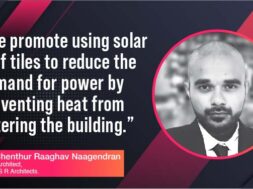
SUMMARY Studio utilizes prefabricated elements and precast concrete to design a home in Vale de Cambra, Portugal.
The client brief
After the release of a prototype and the exhibition in La Biennale di Venezia SUMMARY Studio has unveiled the newest project using their prefab and modular building systems. The requirements for this project were boldly defined from the beginning: the construction should be fast, cost effective and changeable over time, which prompted the studio to use prefabricated elements and to leave parts of the project undefined, assuming the immediacy, flexibility and resources optimization as core themes.
The design strategy
The strategy was clear: a ground floor level for the multiservices program connected with the public space, crowned by the individual habitational units (six cabins with 45m2). Due to the differences between these two programs, it was created independent access for each one, placing them in different levels and taking advantage of the natural ground’s slope.
The groundfloor – use of prefabricated slabs
The ground floor is shaped by prefabricated slabs and structural panels in the external perimeter. This area was conceived in a very flexible way: it’s possible to add or remove compartments or let the whole floor functioning as a big open space. Thus, the users may adapt the space according to their needs.
The first floor – Gomos Systems units
The first floor is composed of Gomos System units. Considering that the maximum building area permitted by law was quite small, the requested empty space was used to separate the housing units. Designed and licensed as a collective housing building, with this feature this project offers the main advantages of single houses: clearly individualized entrances and complete acoustic separation between the different units.
Use of precast and advantages
In the whole building, the structural material – precast concrete – is directly exposed, without any additional finishing, thus reducing the resources, the manpower and the arts involved in the construction process and, consequently, reducing its environmental impact. This approach has a direct effect in the acceleration of the building process: all its components are fully prepared in the factory and quickly assembled in situ, performing at once as structure, insulation and cladding elements.
Cookie Consent
We use cookies to personalize your experience. By continuing to visit this website you agree to our Terms & Conditions, Privacy Policy and Cookie Policy.









